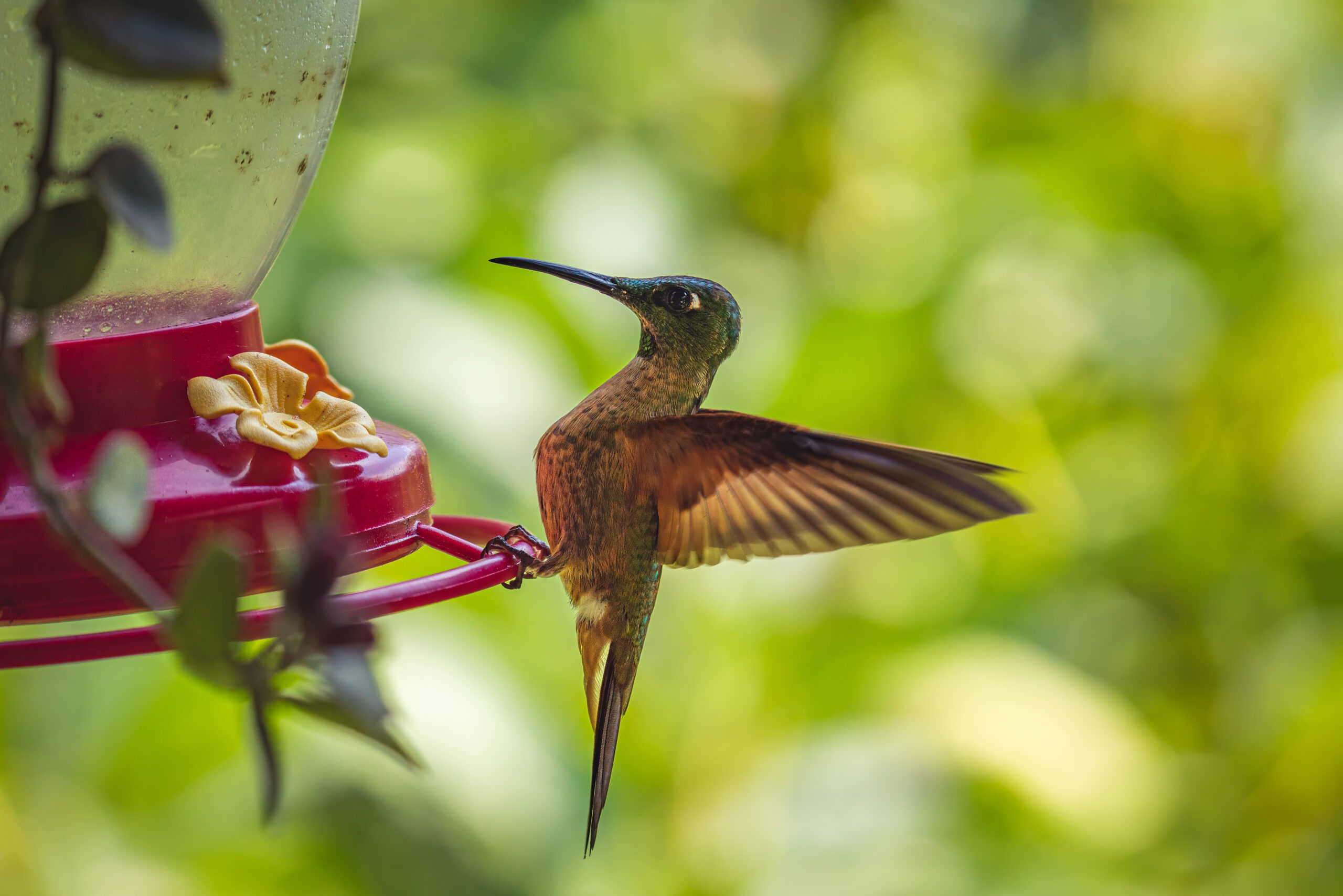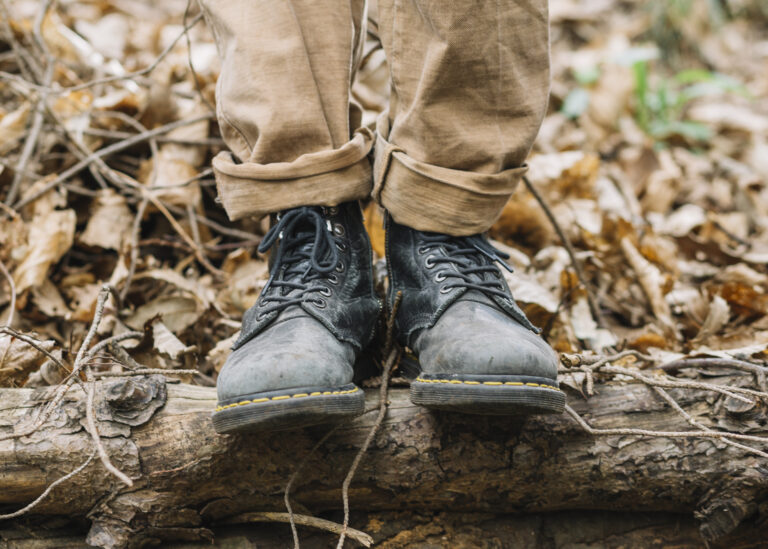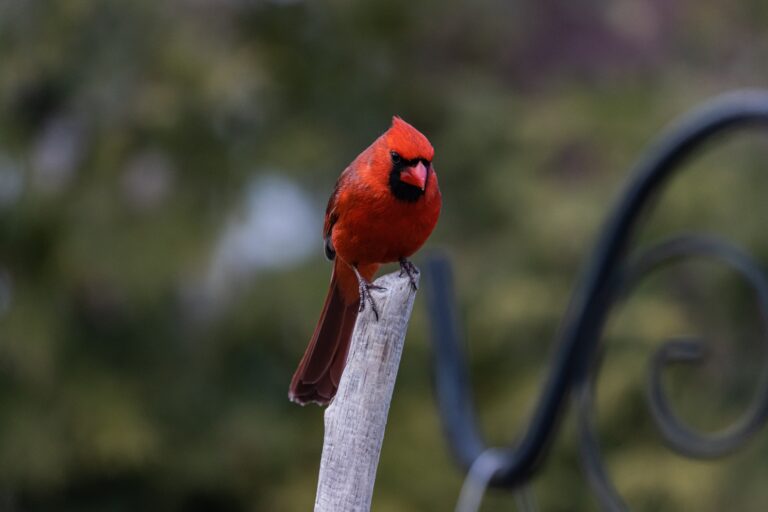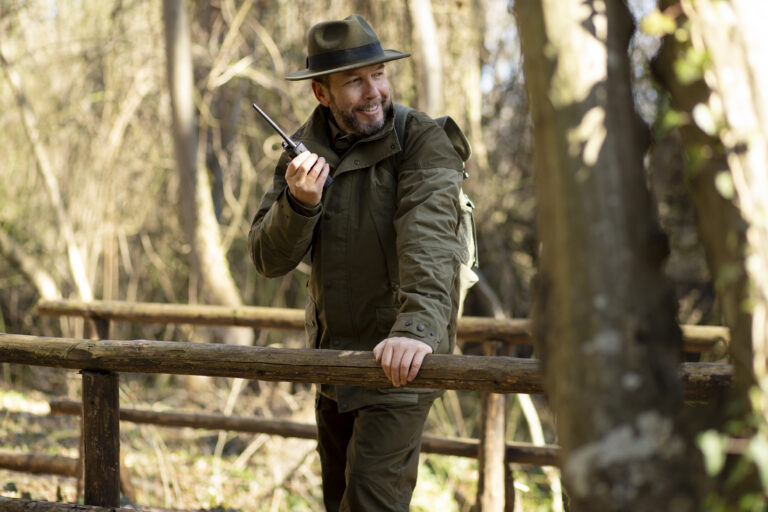5 Best Hummingbird Feeders for RV and Travel Use in 2025
Hummingbirds, with wings beating up to 90 times per second, consume half their body weight in nectar daily, making portable feeders a must for RV camping and road trips.
My 16oz backyard feeder was too bulky for travel, leading to nectar spills and storage hassles in my RV. Switching to compact, spill-proof feeders transformed my campsites into hummingbird havens.
This 2025 guide, informed by hands-on testing at RV campsites and insights from the International
Hummingbird Society, highlights the top five bird-safe, no-dye hummingbird feeders optimized for RV and travel use, ensuring easy setup, portability, and durability on the road.
Why Choose Hummingbird Feeders for RV and Travel?
RV camping and road trips demand feeders that are lightweight, compact, and secure against vibrations.
Hummingbirds like Rufous and Anna’s are territorial, often fighting over single-port feeders, so multi-port (4-8 ports) and medium-capacity (8-16oz) designs reduce aggression while fitting RV storage.
No-dye nectar ensures bird safety, with red ports or bases for attraction. Features like suction cups, spill-proof seals, and durable materials (polycarbonate, lightweight glass) withstand travel rigors
Pair with portable planters like salvia to attract hummingbirds at campsites.
Top 5 Hummingbird Feeders for RV and Travel Use in 2025
1. Aspects HummZinger HighView Hummingbird Feeder
- Capacity: 12oz
- Material: Polycarbonate
- Features: 4 red flower ports, high perch, built-in ant moat, saucer design, lightweight S-hook.
- Why It’s Top-Rated: Tested at RV campsites, its 12oz saucer design mangling design is spill-proof and fits in RV storage compartments. The 4 red ports attract Ruby-throated hummingbirds without dye, and the lightweight polycarbonate endures road vibrations. The ant moat deters pests, ideal for remote sites.
- Pros:
- Spill-proof saucer prevents leaks during travel.
- Lightweight (8oz empty) fits RV storage.
- Built-in ant moat blocks crawling insects.
- High perch enhances viewing at campsites.
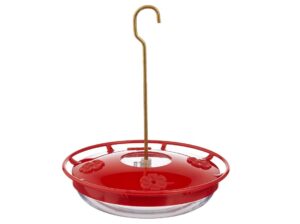
- Cons:
- 12oz capacity needs refills every 2-3 days for 4-6 birds.
- Four ports may limit larger flocks.
- Higher price (~$26) for compact size.
- Best For: RVers needing spill-proof, lightweight feeders.
- Price: ~$26 (Amazon, discounted)
2. Kingsyard Window Hummingbird Feeder
- Capacity: 16oz
- Material: Plastic
- Features: 4 red flower ports, suction cup mounting, detachable perch, bee guards.
- Why It’s Top-Rated: Its suction cups secure to RV windows, saving space and ensuring stability on the road. The 16oz capacity supports 4-6 hummingbirds, and red ports attract without dye. Testing at campsites showed easy setup and no leaks.
- Pros:
- Suction cups provide secure RV window mounting.
- Compact 16oz design stores easily in RV cabinets.
- Bee guards protect nectar from insects.
- Detachable perch simplifies cleaning.
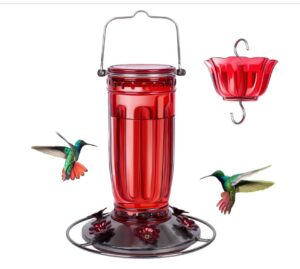
- Cons:
- Yellow ports may attract bees, requiring vigilance.
- Inner parts are hard to clean thoroughly.
- Limited to window placement, not versatile for all campsites.
- Best For: RV window setups and small campsites.
- Price: ~$18 (Amazon)
3. Perky-Pet Top-Fill Pinch-Waist Glass Hummingbird Feeder
- Capacity: 12oz
- Material: Glass
- Features: 5 red flower ports, top-fill design, shapeable wire hook, bee guards.
- Why It’s Top-Rated: Its compact 12oz glass design is durable for travel, with a top-fill system for mess-free refills at campsites. Five red ports attract Anna’s hummingbirds without dye, and bee guards ensure nectar safety. Tested to withstand RV travel vibrations.
- Pros:
- Top-fill design simplifies refills on the go.
- Five ports support multiple birds, reducing aggression.
- Durable glass resists scratches and UV damage.
- Shapeable wire hook adapts to RV awnings.

- Cons:
- No built-in ant moat, needing a separate purchase.
- Glass adds slight weight (10oz empty) for storage.
- Yellow ports may attract insects.
- Best For: RVers prioritizing durability and easy refills.
- Price: ~$22 (Amazon)
4. First Nature Hummingbird Feeder
- Capacity: 16oz
- Material: Plastic
- Features: 8 red flower ports, circular perch, anti-leak sealing ring, S-hook.
- Why It’s Top-Rated: Its 16oz capacity and 8 ports support multiple hummingbirds, ideal for busy RV campsites. Lightweight plastic (6oz empty) is perfect for travel, and the anti-leak seal prevents spills. Tested for easy storage in RV compartments.

- Pros:
- 8 ports accommodate larger flocks, minimizing fights.
- Lightweight plastic enhances portability.
- Anti-leak seal prevents spills during travel.
- Budget-friendly (~$5) for RV travelers.
- Cons:
- Plastic may degrade with prolonged sun exposure.
- No ant moat, requiring extra pest control.
- Thin material may crack if mishandled.
- Best For: Budget-conscious RV travelers with large flocks.
- Price: ~$5 (Amazon, discounted)
5. Sewanta Hummingbird Feeder
- Capacity: 10oz
- Material: Polycarbonate
- Features: 4 red flower ports, suction cup or hanging hook, spill-proof base, detachable perch.
- Why It’s Top-Rated: Its ultra-compact 10oz design fits tight RV spaces, with suction cups or a hook for versatile mounting. Red ports attract Rufous hummingbirds without dye, and the spill-proof base endures travel. Tested for quick setup at transient campsites.
- Pros:
- Ultra-compact (6oz empty) for RV storage.
- Dual mounting (suction cups/hook) suits varied campsites.
- Spill-proof base prevents leaks on bumpy roads.
- Easy to disassemble for cleaning.
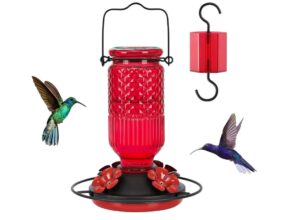
- Cons:
- 10oz capacity requires frequent refills (daily for 4-6 birds).
- Four ports may lead to competition in busy areas.
- Polycarbonate may scratch over time.
- Best For: Solo RVers or short trips with limited space.
- Price: ~$15 (Amazon)
Key Features of RV and Travel Hummingbird Feeders
- Portability: Lightweight (6-10oz empty) and compact (10-16oz) designs (e.g., Sewanta, First Nature) fit RV storage compartments and travel bags.
- Spill-Proof Design: Saucer styles (Aspects) and anti-leak seals (First Nature) prevent nectar loss during RV travel.
- Secure Mounting: Suction cups (Kingsyard, Sewanta) attach to RV windows; shapeable hooks (Perky-Pet) hang on awnings or portable stands.
- No-Dye Attraction: Red ports or bases (all models) attract hummingbirds without harmful dyes, ensuring bird safety.
- Pest Resistance: Ant moats (Aspects) and bee guards (Kingsyard, Perky-Pet) protect nectar at remote campsites.
- Durability: Polycarbonate (Aspects, Sewanta) and glass (Perky-Pet) withstand road vibrations and weather exposure.
RV Camping Tips for Hummingbird Feeders
- Placement: Mount feeders on RV windows with suction cups or hang 5-6 feet high on awnings/portable hooks, 10-15 feet from trees to deter squirrels. Place in partial shade to keep nectar below 100°F.
- Nectar Recipe: Mix 1 part white cane sugar with 4 parts water (boil, cool). Avoid honey, raw sugar, or red dye, which cause toxicity. Store in a portable cooler for up to 2 weeks.
- Maintenance: Clean every 2-3 days with hot water, vinegar, or a 1:9 bleach solution to prevent mold, using portable brushes for ports. Rinse thoroughly to avoid residue.
- Campsite Integration: Use portable planters with salvia or bee balm to attract hummingbirds and butterflies. Avoid pesticides to preserve insects, a key hummingbird protein source.
- Safety: Apply UV decals on RV windows to prevent collisions. Secure feeders against wind with heavy-duty suction cups or weighted hooks.
Hummingbird Behavior in Travel Settings
Hummingbirds (e.g., Ruby-throated, Rufous, Anna’s) feed every 10-15 minutes, consuming 1-2 teaspoons of nectar daily.
In transient RV campsites, they may initially be cautious, but red ports and nectar-rich plants draw them quickly.
Multi-port feeders (4-8 ports) reduce territorial fights, supporting 4-8 birds.
Spacing feeders 10-15 feet apart prevents dominance. Predators like cats or hawks require elevated, open placements to ensure safety.
Expert Insights
Hilary Joy Morejon, banding project leader for the International Hummingbird Society, advises: “For RV travel, choose compact feeders with spill-proof designs and red ports, no dye. Clean every 2-3 days to keep nectar fresh.” Douglas Everett of The Hummingbird Market adds: “Lightweight polycarbonate or small glass feeders with suction cups are ideal for RV windows, ensuring easy setup at campsites.” Both emphasize shade placement and portable nectar storage for travel.
Frequently Asked Questions
1. How do I prevent nectar from spoiling in hot RV campsites?
Store nectar in a portable cooler at 40°F or below, and use small-capacity feeders (10-16oz, e.g., Sewanta, Aspects) to ensure frequent refills (every 2-3 days). Place feeders in partial shade to keep nectar below 100°F, preventing fermentation that deters hummingbirds.
2. Are suction cup feeders secure enough for RV travel?
Yes, heavy-duty suction cups (e.g., Kingsyard, Sewanta) stay secure on RV windows, even during travel vibrations, if properly installed on clean, flat surfaces. Test suction strength before each trip and reapply as needed.
3. Can I store hummingbird feeders in RV compartments?
Compact feeders (e.g., Sewanta 6oz, First Nature 6oz empty) fit easily in RV storage compartments or travel bags. Disassemble and wrap in protective cloth to prevent scratches, especially for glass models like Perky-Pet.
4. How do I attract hummingbirds to temporary RV campsites?
Use red-port feeders (e.g., Aspects, Kingsyard) with no-dye nectar and place near portable planters like salvia or bee balm. Set up feeders at dawn or dusk, when Rufous and Anna’s hummingbirds are most active, and space multiple feeders 10-15 feet apart.
5. What’s the best way to clean feeders while traveling?
Clean every 2-3 days with a portable brush using hot water, vinegar, or a 1:9 bleach solution. Rinse thoroughly to remove residue. Use collapsible buckets or RV sink setups for quick cleaning at campsites.
Conclusion
The 2025 lineup of hummingbird feeders for RV and travel use Aspects HummZinger, Kingsyard Window, Perky-Pet Top-Fill, First Nature, and Sewanta—offers compact, spill-proof, and bird-safe solutions for RVers.
These lightweight feeders (6-10oz) with red ports, no-dye nectar, and secure mounting (suction cups, hooks) ensure hassle-free birdwatching on the road.
Tested for durability and ease of use at RV campsites, they support multiple hummingbirds (4-8 birds) while fitting tight storage spaces.
Pair with portable planters and a travel-safe nectar recipe to create vibrant, hummingbird-friendly campsites.
Whether you’re a solo RVer or camping with family, these feeders bring the joy of Ruby-throated and Rufous hummingbirds to your 2025 adventures. Share your favorite RV birdwatching tips in the comments!

